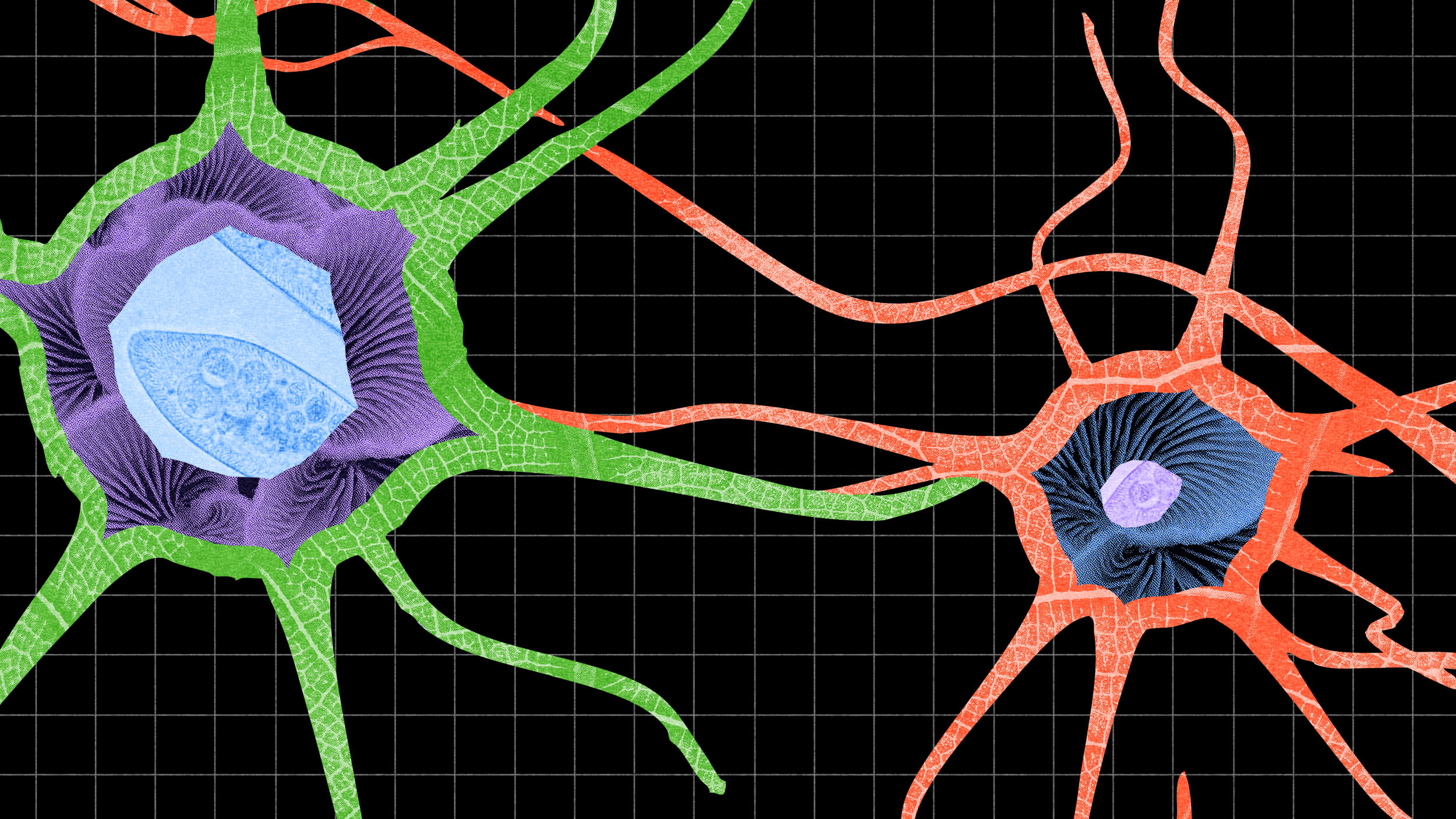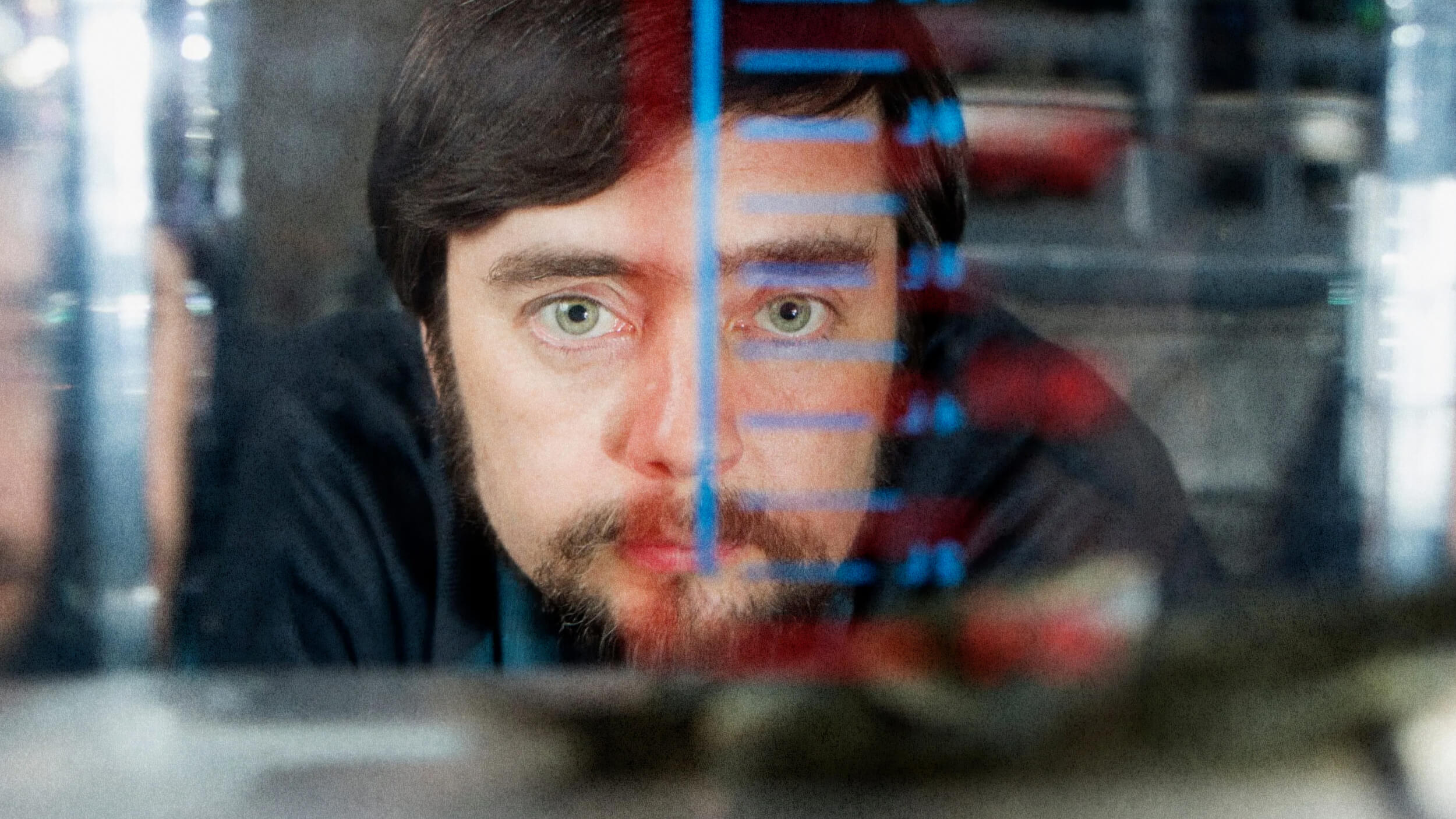Michael Levin: People tend to think of intelligence as being of two kinds: There's the quote, unquote "real" intelligence, which is what we are supposed to have, and then there's this idea of a 'collective intelligence,' so swarms of bees, colonies of ants, shoals of fish, and so on. And people tend to think of those as radically different things.But the reality is all intelligence is collective intelligence, and this is because we are all made of parts.
So you and I are collections of cells, and these cells, including neurons and various other cells in our body, have many competencies: this is because they were once separate individuals by themselves. They were unicellular organisms with all of the skills needed to survive in a complex world. And that journey that we all took, those progressive steps by which we construct ourselves—we construct our bodies, we construct our minds—that journey is maybe the most profound question in all of science.
I'm Michael Levin, and I'm a developmental biologist at Tufts University. Developmental biology is maybe the most magical of all the sciences because you get to see with your own eyes that journey that we all take from physics to mind. We all start out life as an unfertilized oocyte, and then slowly, gradually, step-by-step, that oocyte turns into a bunch of cells that self-construct an embryo, and eventually that embryo matures and becomes a large-scale adult. In the case of a human, it will be an individual with metacognitive capacities and the ability to reason.
But we all have our origin in that chemistry and physics of that initial oocyte. And the magic of developmental biology is that there is a mechanism by which all of these cells get together, and they are able to cooperate towards large-scale goals. This is the notion that biology uses what I call a "Multi-scale competency architecture," which basically means that we are not simply nested structurally in terms of cells which comprise tissues, comprising organs, and bodies, and then ultimately societies and so on — that's obviously true on a structural level.
But more interesting is the fact that each of these layers has certain problem-solving competencies. Each one solves problems in their own space, so cells are simultaneously solving problems in physiological spaces and metabolic spaces and gene expression spaces, and tissues and organs are solving those problems. But, for example, during embryogenesis or regeneration, they're also solving problems in anatomical space. They're trying to navigate a path from the shape of an early embryo or a fertilized zygote all the way up to the complexity of a human body with all of the different types of organs and structures.
So the competency architecture refers to the fact that all of the parts inside of us and inside of all other creatures are themselves competent agents with preferences, with goals, with various abilities to pursue those goals, and other types of problem-solving capacities. What evolution has given us is this remarkable architecture where every level shapes the behavioral landscape of the levels below — and the levels below do clever and interesting things that allow the levels above not to have to micromanage, and to be able to control in an interesting top-down capacity.
One of the most important things about this emerging field of diverse intelligence is that we, as humans, have very limited capacity and finely-honed ability to see intelligence in medium-sized objects moving at medium speeds through three-dimensional space. So we see other primates and we see crows and we see dolphins, and we have some ability to recognize intelligence. But we really are very bad at recognizing intelligence in unconventional embodiments where our basic expectations strain against this idea that there could be intelligence in something extremely small or extremely large.
People often criticize this approach by saying, "Well, then anything goes. If you can pick up a rock and say, 'I think this rock is cognitive and intelligent, you know, there's a spirit with hopes and dreams inside of every rock.'" That's not what this is. This is quite different. As an engineer, what you have to do is you have to come up with a way to look at a particular system that doesn't overestimate its intelligence or underestimate its intelligence. If you treat complex animals as if they were clockwork, you're gonna miss everything that's important and exciting about how they work. If you treat a clock as if it had a complex intelligence, you're going to waste a lot of time: but getting it right is fundamentally important. And so, you have this spectrum where the engineer has to pick the right level for the right system, and it's critical not to then say, "Well, that doesn't sound like human intelligence," right? We're looking for the basic minimal version.
So I think it should have two things: The first thing it should have is some degree of goal-directedness, some ability to take different paths to get to the same goals; so this is William James's definition of intelligence. And it has to have some ability to undertake actions that are not completely determined by local circumstances. So you start with all of that, and systems that have scaled up, those basic, very fundamental, non-zero levels of agency, we call that life. So it is a spectrum, and I think that in this Universe it goes all the way to the bottom.
It's very hard for people to think about these unconventional kinds of intelligences that may be either too large or too small. And of course, they often work in other spaces. So we're good with three-dimensional space, but imagine if we had a primary sense of our own blood chemistry. If you could feel your blood chemistry the way that you currently see and smell and taste things that are around you, I think we would have absolutely no problem having an intuitive understanding of physiological-state space the way we do for three-dimensional space. I think that we would immediately be able to recognize our various internal organs as intelligent agents navigating that space and solving these kind of problems, all the various things that happen during the day.
And here's one of my favorite examples of problem solving in physiological and transcriptional spaces: So we have these worms. These are Planaria, these are flatworms. And if you put these flatworms in a solution of barium—barium is a non-specific potassium channel blocker; it blocks the ability of these cells to exchange potassium with the outside world—the cells really don't like it, especially cells in the head, because the head is full of neurons; neurons love to pass potassium. And so what happens is that overnight their heads explode. Literally, it's called head deprogression; they literally lose their heads.
But if you leave them in the barium, within a couple weeks they grow back a new head. And the new head is completely barium-adapted, has no problem with the barium whatsoever. We said, "How could this be?" We looked at the original heads, the original naive heads, we looked at the barium-adapted heads, and we simply did a subtraction and asked, "What are the different genes that are expressed here?" And we found out that the barium-adapted heads have just a small number of genes that were turned on and off to allow them to adapt to this novel stressor.
Now, here's the amazing part. Planaria never see barium in the wild. There's no evolutionary history of knowing what to do when you're hit with barium. This is not an ecological stressor that they normally have to deal with. So just imagine you're a bunch of cells and you're hit with this incredible physiological stressor you've never seen before. You've got tens of thousands of genes. What do you do? How do you know which genes to turn on and off? You don't have time to try combinations. You don't have time for an exhaustive search. You don't have time for hill climbing. You don't have time to try random things because you'll probably kill the cell long before you solve the problem. And yet, you are able to navigate from where you are to where you need to be to escape this physiological stressor.
And so, what I think evolution has done is pivoted some of the same tricks from very simple systems that only solve metabolic problems eventually to physiological and then to transcriptional problems. And when multicellularity comes on the scene, large-scale anatomical problems. And so it's never a question of: Is something physics and chemistry, or is it cognitive? The question is: What kind of cognition, and how much?






